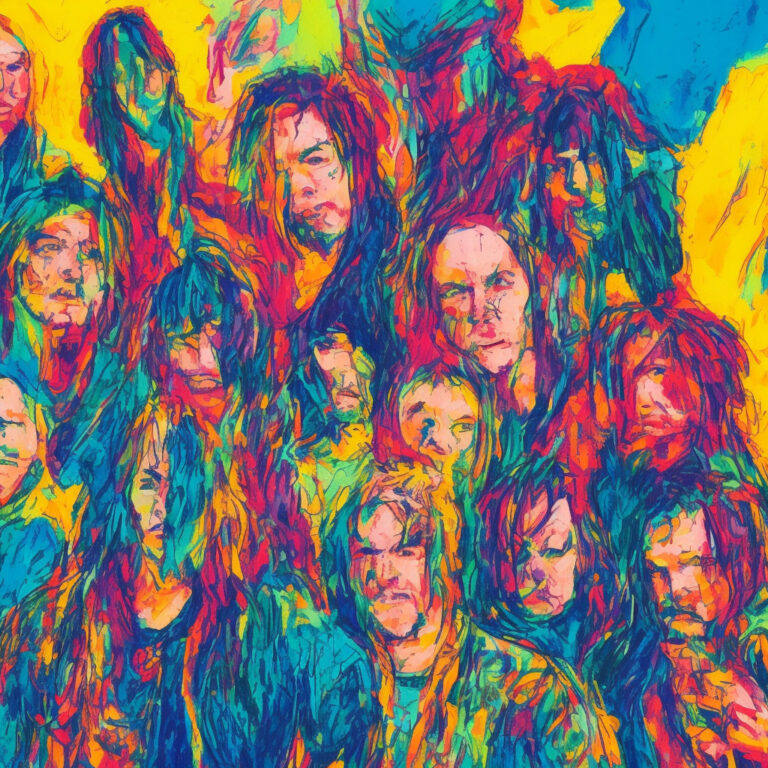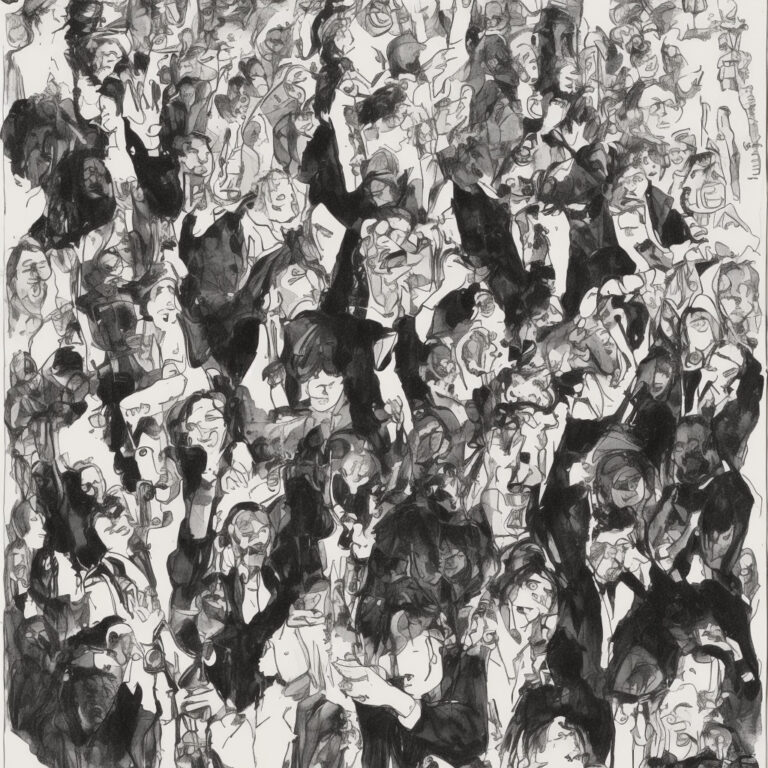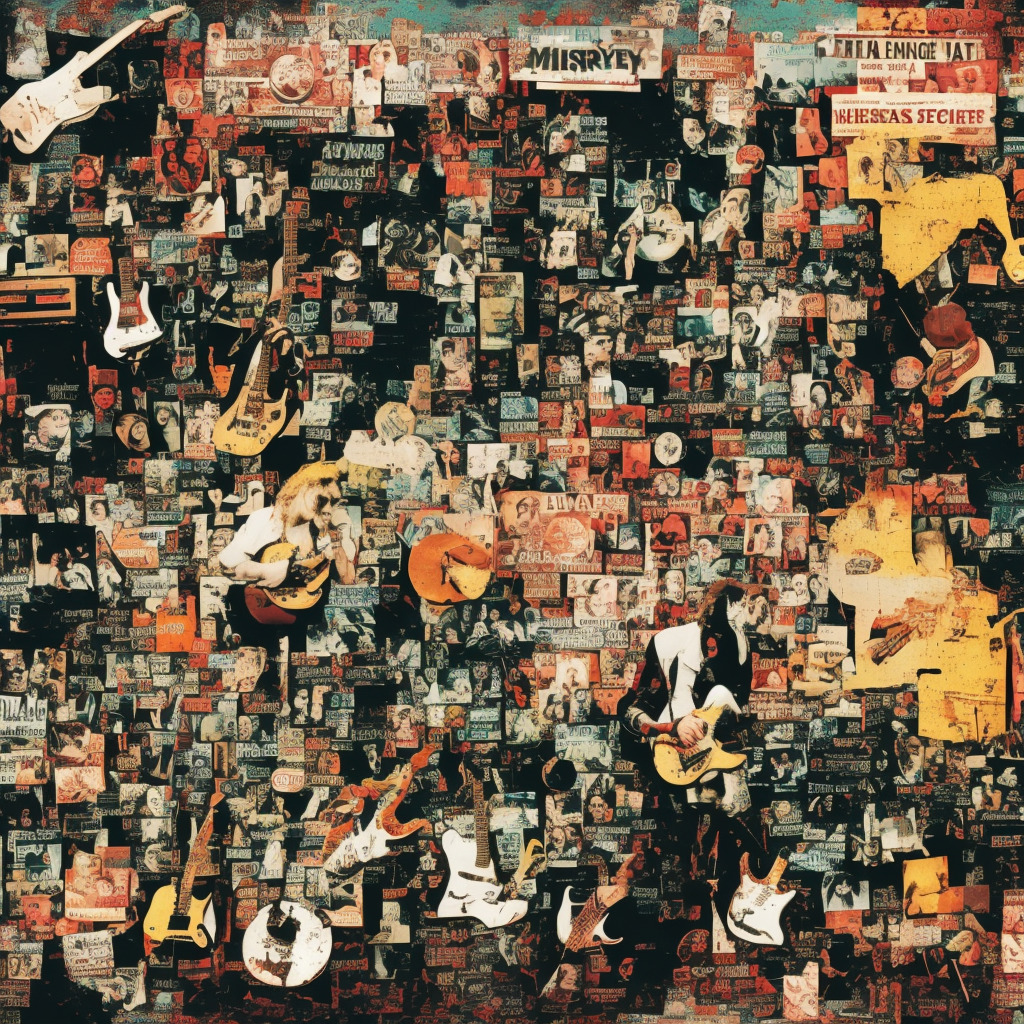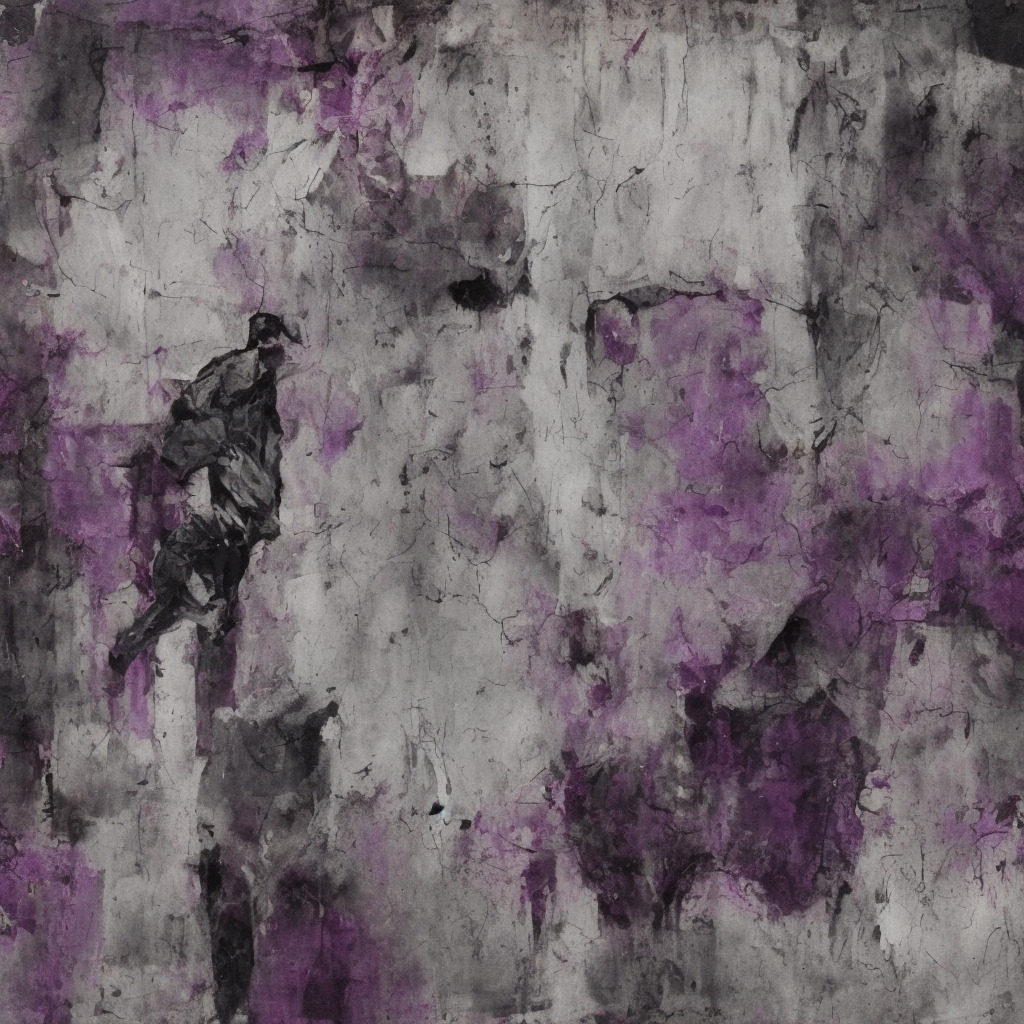🎸 Just in! #SoulAsylum’s “Misery” was inspired by The Beatles’ “Hello Goodbye” 🎶 Now that’s a groovy connection worth singing about! 🤘🎤 #MiseryLovesCompany #90sRockTrivia Read about it: tinyurl.com/26fey2ut
Unraveling the Enigma of Soul Asylum’s Timeless Appeal
Soul Asylum: Capturing hearts with their unique sound for over three decades and proving their timeless appeal with tracks like “Misery” and award-winning “Runaway Train.”

For over three decades now, Soul Asylum has been captivating the hearts of alternative rock fans with their unique blend of punk, post-grunge, and melodic rock anthems. One song that particularly encapsulates the band’s essence is “Misery,” which was released as the lead single from their sixth studio album, Let Your Dim Light Shine, in 1995.
Formed in 1981, Soul Asylum hails from Minneapolis, Minnesota, and the band’s most well-known lineup comprises Dave Pirner (vocals, guitar), Dan Murphy (guitar), Karl Mueller (bass), and Michael Bland (drums). Over the years, they’ve experienced several lineup changes, with Pirner remaining the only constant member. Their unwavering dedication to their craft has earned them several awards and accolades, including a Grammy for Best Rock Song in 1994 for “Runaway Train.”
Coming back to “Misery,” this mid-tempo rocker features a catchy, sing-along chorus and cleverly crafted lyrics that showcase the band’s ability to address the darker aspects of life with a wry sense of humor. The song achieved moderate success in the United States, peaking at #20 on the Billboard Modern Rock Tracks chart, and #29 on the Mainstream Rock Tracks chart.
That being said, it’s worth mentioning that Soul Asylum has had their fair share of criticisms over the years. Some detractors argue that their sound is derivative of other alternative rock bands of the time, even going as far as to label them as “post-grunge clones.” The band’s commercial peak in the mid-90s and subsequent decline in popularity may have given credence to this view for some.
Regardless of these critiques, Soul Asylum’s “Misery” remains a fan favorite and a testament to their lasting impact on the music industry. Their constantly evolving sound has allowed them to survive the test of time and maintain a loyal fan base throughout their career. In 2020, they released their twelfth studio album, Hurry Up and Wait, proving that Soul Asylum is still relevant and ready to rock on for years to come.
Charting the Highs and Lows of a ’90s Classic
Soul Asylum’s ’90s classic “Misery” captivated global audiences with its infectious melody and relatable lyrics, enjoying impressive chart success and an iconic stint on “Beverly Hills, 90210.”

Following its release on June 6, 1995, Soul Asylum’s “Misery” made quite a splash on the music charts, both in the United States and internationally. The track, which served as the lead single from their seventh studio album, “Let Your Dim Light Shine,” initially entered the Billboard Hot 100 at position 96. However, it didn’t take long for the song’s infectious melody and relatable lyrics to resonate with listeners, propelling “Misery” to new heights.
The song steadily climbed the charts and eventually peaked at position 20 on the Billboard Hot 100, marking it as one of the band’s most successful singles. Additionally, “Misery” fared well on the Billboard Modern Rock Tracks chart, where it reached an impressive number four during its run. It’s worth noting that this wasn’t the band’s first brush with chart success, as their 1993 hit “Runaway Train” had previously reached number five on the Hot 100.
While “Misery” enjoyed significant success domestically, it also managed to make waves across the globe. The song entered the UK Singles Chart at position 61 and eventually climbed to its peak position of 45, marking it as a minor hit in the region. Furthermore, “Misery” achieved notable success in Australia, where it reached number 26 on the ARIA Charts.
To add to its list of accolades, the song also made an appearance on the Canadian charts. “Misery” debuted at position 96 on the RPM Top Singles chart and later achieved its peak position at number 53, showcasing its appeal to a wide range of audiences.
In a fun piece of chart trivia, the song’s peak position on the Billboard Hot 100 coincided with the band’s appearance on an episode of the TV show “Beverly Hills, 90210” in late 1995. The band performed “Misery” during the episode, which likely contributed to the song’s continuing popularity that year.
Overall, Soul Asylum’s “Misery” demonstrated considerable chart success during its time in the spotlight, leaving a lasting impression on music fans across the world. Its iconic status as a ’90s alternative rock anthem is a testament to the band’s undeniable talent and enduring appeal.
Diving Into the Depths of “Misery”
Before we delve into the lyrics of “Misery” by Soul Asylum, let’s set the stage for the era in which it was written. The early 1990s were a time of significant political and social changes, with the collapse of the Soviet Union and the rise of grunge music. Soul Asylum’s “Misery,” released in 1995, captured the essence of the times with its poignant lyrics and melancholic melody.
They say misery loves company
We could start a company and make misery
Frustrated, Incorporated
Well I know just what you need
I might just have the thing
I know what you’d pay to see
Put me out of my misery
I’d do it for you, would you do it for me
We will always be busy making misery
We could build a factory and make misery
We’ll create the cure; we made the disease
Frustrated, Incorporated
Frustrated, Incorporated
Well I know just what you need
I might just have the thing
I know what you’d pay to feel
Put me out of my misery
All you suicide kings and you drama queens
Forever after happily, making misery
Did you satisfy your greed, get what you need
Was it only envy, so empty
Frustrated, Incorporated
Frustrated, Incorporated
Well I know just what you need
I might just have the thing
I know what you’d pay to feel
Put me out of my misery
I’d do it for you, would you do it for me
We will always be busy making misery
The lyrics of “Misery” convey a sense of discontent and disillusionment that many people experienced during the 1990s. The song speaks to the dissatisfaction and frustration of living in a world that seems to prioritize greed and materialism over personal happiness and fulfillment. The repeated phrase, “Frustrated, Incorporated,” highlights the idea that this misery is like a business or industry, manufacturing and perpetuating suffering.
The lines, “We could build a factory and make misery / We’ll create the cure; we made the disease,” further emphasize this notion that society often generates its own problems and then seeks solutions for them. This sentiment is not only relevant to the 1990s but continues to resonate today, as we grapple with issues like consumerism, environmental destruction, and mental health crises.
While the lyrics of “Misery” paint a bleak picture, they also serve as a call for individuals to recognize their role in perpetuating this cycle of unhappiness and consider how they might break free from it. By reflecting on the specific aspects of their lives that contribute to their misery, listeners are encouraged to confront their own dissatisfaction and seek out more meaningful, fulfilling experiences.
In conclusion, “Misery” by Soul Asylum offers a powerful commentary on the human condition and the impact of societal norms and expectations on our well-being. As we continue to navigate the complexities of modern life, it remains a relevant and thought-provoking song that invites us to question our priorities and examine the choices we make in the pursuit of happiness.
Visual Storytelling: The Iconic Music Video for “Misery”
Unraveling the narrative of suffering through striking visuals and artful direction, Soul Asylum’s iconic music video for “Misery” remains an enduring testament to the power of visual storytelling.
The music video for “Misery” by Soul Asylum distinguishes itself with unique visual storytelling and a creative approach that resonated with the band’s fans back in the day. Directed by Matt Mahurin, whose notable works include music videos for Alice in Chains and Metallica, the “Misery” music video showcases his artistic vision and talent for combining thought-provoking imagery with the theme of the song.
Shot predominantly in black and white, the video features the band performing amidst a series of vignettes that depict various forms of suffering and struggle. The characters portrayed in these vignettes embody different aspects of misery, such as addiction, homelessness, and emotional turmoil. Through the use of subtle visual effects and intercutting between these scenes and the band’s performance, the video creates an evocative narrative that remains open to interpretation.
The “Misery” music video had a moderate budget, allowing for a higher production value than some of Soul Asylum’s previous videos. This investment is evident in the quality of the cinematography and the seamless integration of the visual effects. Despite the dark themes explored in the video, the band and Mahurin managed to avoid sensationalizing the subject matter and instead created a thought-provoking piece of art that complements the song’s lyrics.
Fans of Soul Asylum were quick to embrace the “Misery” music video, and over time, it has become one of the band’s most iconic and recognizable visual works. The video earned a nomination for Best Art Direction at the 1996 MTV Video Music Awards but lost to Björk’s “It’s Oh So Quiet” music video.
Since its release, the “Misery” music video continues to inspire fan-made tributes and covers on YouTube, reinforcing the song’s timeless appeal and the enduring impact of its visual storytelling. As a testament to the collaboration between Soul Asylum and Matt Mahurin, the “Misery” music video remains a classic example of the power of visual storytelling in the world of music videos.
The Creative Genius Behind “Misery”
Dave Pirner, the lead vocalist and primary songwriter of Soul Asylum, is the composer of the catchy and emotionally stirring track “Misery.” Pirner’s extraordinary talent for blending thought-provoking lyrics with unforgettable melodies is evident in many of Soul Asylum’s other hits. One such song that stands out is the Grammy Award-winning “Runaway Train,” which not only topped the charts but also raised awareness for missing children. Dave Pirner’s ability to create impactful music that resonates with listeners has solidified his place as a highly respected and influential figure in the rock music scene.
Awards, Accolades, and Appearances
“Misery” – a timeless rock anthem, Grammy-winning, pop culture staple, and inspiration for diverse, unforgettable covers.

“Misery” has certainly made its mark since its release, garnering both awards and widespread recognition. Soul Asylum received a Grammy Award in the category of “Best Rock Song” for “Misery” in 1996. This success helped cement the band’s place in the rock music scene and showcased their aptitude for crafting powerful hooks and melodies.
The song’s prominent position in popular culture can be traced through its various appearances in different forms of media. For instance, “Misery” was featured in the 1995 film “Clerks,” directed by Kevin Smith, which effectively exposed the track to a broader audience. Additionally, the song has been used in multiple television shows such as “My So-Called Life” and “Melrose Place,” further solidifying its status as an influential rock anthem of the 1990s.
As testament to the song’s enduring popularity, several cover versions of “Misery” have been produced over the years, breathing fresh life into the track and introducing it to new generations of listeners. One noteworthy cover was performed by the Swedish rock band Mustasch, who put their unique spin on the song and injected it with their signature heavy sound. Another notable rendition came from the American punk rock band The Suicide Machines, who infused “Misery” with a faster tempo and punk energy. These covers, among others, demonstrate the adaptability and timelessness of “Misery” as a quintessential rock classic.
Dissecting the Musical Anatomy
Diving into the technical aspects of “Misery,” it’s apparent that Soul Asylum crafted a song that’s both accessible and musically intriguing. Written in the key of G major, the song follows a fairly common chord progression (I-IV-V-IV). However, the band uses this familiar structure to their advantage, creating a catchy melody that keeps listeners engaged throughout.
The verses follow a G-C-D-C progression, which is a variation of the classic doo-wop progression. This gives the song a nostalgic feel while still maintaining its alternative rock edge. The pre-chorus introduces a slight change, utilizing a G-Em-C-D progression, which adds an emotional depth to the song. The chorus then reverts to the original G-C-D-C progression, reinforcing the song’s infectious hook.
When it comes to tempo, “Misery” is set at a moderate pace, clocking in at around 102 beats per minute (BPM). This tempo choice complements the song’s overall vibe, allowing for a laid-back feel without sacrificing energy. The rhythm section drives the song forward, with the drums providing a solid backbeat and the bass guitar offering a groovy counterpoint to the melody.
One of the standout features of “Misery” is the guitar work. The song features both clean and distorted guitar tones, creating a dynamic contrast between the verse and chorus sections. During the verses, the clean guitar arpeggios provide a melodic foundation, while the chorus brings in a more aggressive, distorted sound. The lead guitar also adds some tasteful licks throughout the song, showcasing the band’s musicianship without overpowering the overall arrangement.
The vocal performance is another key element of “Misery.” The lead singer’s distinct vocal style gives the song a unique character, while the layered harmonies in the chorus add an extra layer of depth. The lyrics, which touch on themes of loneliness and despair, are delivered with a sense of vulnerability that resonates with listeners.
Overall, “Misery” is a prime example of Soul Asylum’s ability to craft memorable songs that balance catchy melodies with intricate musicality. The song’s blend of alternative rock and pop sensibilities, coupled with its emotionally-charged lyrics and polished production, make it a standout track in the band’s discography.







